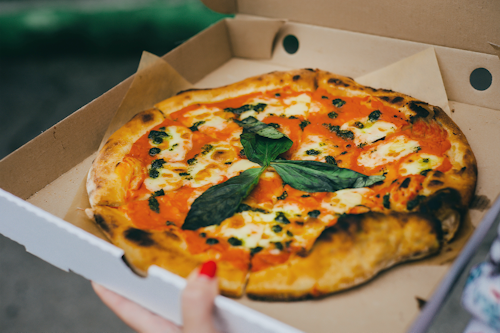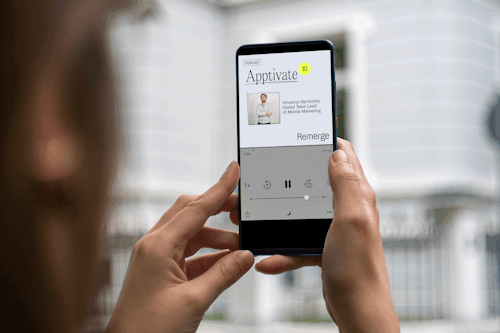A complete guide to user segmentation for delivery apps
October 05, 2020

How many more orders would your customers make if they were shown the right ads at the right time? What are the effective ways to drive customer loyalty? How can you incentivize a customer to come back to your app after they have lost interest?
By understanding the buyer journey and knowing where your customers are in the funnel, you can design high-converting ad campaigns through relevant messaging. An effective segmentation strategy is essential in achieving better conversion and retention rates, and can be done by identifying user attributes and grouping users accordingly.
In this guide, we’ll be diving into the three main segments for delivery apps: First-Time Buyers, Active Users, and Churning Users. We’ll then share tried-and-tested practices that increase customer app loyalty and tips on how to set your budget accordingly.
Your go-to segmentation strategy in a nutshell
Segment: First-Time Buyers
Users who have installed your app but have not made any in-app purchases to date. The goal is to activate them to make their first purchase within the app, often with incentives or content (like products or restaurants) that are known to convert.
Segment: Active Users (a.k.a. Active Previous Purchaser)
Users who have made at least one order in the last 30 days. This qualifies them as customers who are still ‘warm’ or somewhat interested. The goal for this segment is to increase the frequency of orders per user. For example, if you have a customer who usually places orders twice a week, the aim is to increase the frequency to three times per week or more. Ultimately, we want to turn active users into loyal users in a measurable way.
Segment: Churning Users (a.k.a. Lapsing Previous Purchaser)
Users who have not been active for a given time frame: their last order was over 30 days ago. These users are slowly fading away, and if not retargeted the right way, will abandon your app. The goal is to bring churning users back before they’re gone for good by providing them new incentives to order once more.
Setting targets strategically for each user segment
When it comes to budget allocation, the price to pay for each converting user depends on where they are in the funnel. As each segment represents a different stage in the customer lifecycle, targets should also be set to reflect those stages. The intention is not to prioritize one segment over the other, but to find the most cost-effective way of distributing your investment.
- First-Time Buyers: When it comes to driving the first order, consider that the investment can be up to 10 times higher than other segments. This is the stage where customer interest is at its highest. Since the first-time order finalizes the user acquisition journey, think about the lifetime value (LTV) of the users to determine the target. How much of that LTV are you willing to invest? For example, you’re in a growth stage and your users’ average LTV in the first year is €100. This would then be your target goal.
- Active Users: For this segment, the target could be maximized to break-even point in order to drive loyalty. It depends on the maximum value that you would be willing to pay for an additional order of an active user. For example, if your app has a margin of €2 on each order, the target on your network ads would be placed at €2 to get that order. For each of the orders that these make, take price per order into account: if 10 orders were triggered at 2€, then the investment would come to €20.
- Churning Users: Without immediate action, you are likely to lose users in this segment and you will need to reinvest in reactivating them once more. The price point for this segment lies between the price one is willing to pay for an active user and an inactive user. Lapsing users are harder to bring back in comparison with those of other segments. For this campaign to make financial sense, it should cost less than acquiring a new user.
Segmentation best practices for delivery apps
First order satisfaction is key to retaining a user
Often enough, you have users who have viewed the content of your app but haven’t gone through the entire purchase funnel. This means that the ads you show to first-time buyers should not only focus on the first conversion itself but also for customer retention. As the first order is only the beginning of the retention journey, it is important to give them a good in-app experience. You’d want them to come back, so increase the chances by advertising content that ensures a positive experience.
For example, food delivery apps can show a top-rated restaurant in the banner ad and deep-link it to that specific restaurant. This combination increases the chances of a satisfying first order: the customer becomes interested in a positively reviewed restaurant and will be taken straight to the restaurant’s order page upon clicking on the ad.
Creatives: Continue providing value for previous purchasers
Keep things interesting and fresh by getting creative with your ads. Here are a few more tips for good performance:
- Journey-based content: Understand where your customers are in the buyer journey. For First-Time Buyers, display static banners showing top vendors and associated promotions e.g. 50% off, free delivery, free dessert, and so on. For Active Buyers, display dynamic product ads with vendors or products based on the user’s previous purchase history. For Churning Users, display dynamic product ads focusing on top vendors with deals, static ads with newcomers (new restaurants), or new features within the app.
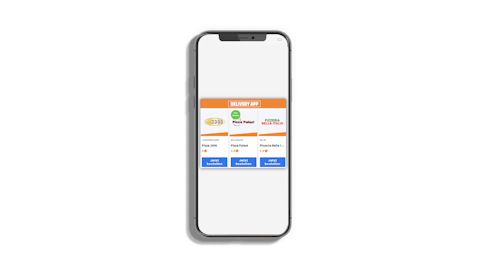
Sample of a dynamic product ad showcasing restaurants based on previous purchases — in this case, a customer who loves pizza
- Coupon codes and promotions: Show special deals and discounts that will entice customers to open and return to your app. The age-old “limited-time offer” still does the trick — urgency can get them to act on the deal immediately. As we’ve seen offline, discounts are a great way to entice users to not only purchase, but also to purchase more.
- New products and services: Show something new. Keep bringing in the value. There’s a chance that the user still hasn’t found a place, product, or service that they’d like to make repeat orders from.
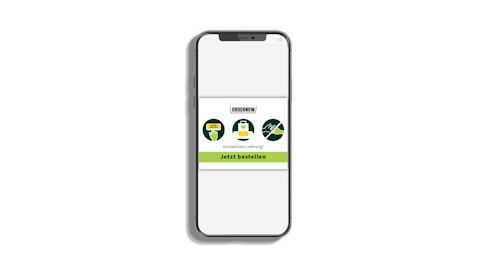
Sample of a campaign in Germany, offering contactless payment
- Personalization: Get to know what your customers like. Retarget them with restaurants or products that are similar or complementary to the ones that they’ve ordered from, or restaurants and products that other users with similar purchasing behaviors have ordered from.
- Relevant ad messaging: Use the ad to say something relevant to the current situation. As we’ve recently seen with COVID-19, many delivery apps have updated their creative messaging to inform customers about changes in their service.
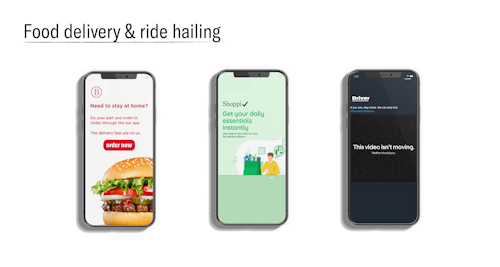
Campaigns from delivery and ride-hailing apps with updates during the COVID-19 lockdown
Wrapping up
When it comes to segmentation, simplicity is the best strategy. This approach is perfectly adaptable to your definition of active and lapsed users and will allow you to choose how granular you want to go, depending on what makes sense for your business. By testing and measuring, this setup will let you best optimize your segmentation tactics towards performance and scale.
By focusing on the customer lifecycle, this strategy will allow you to reach and cover almost every single customer in your database and provide them with relevant creatives that are likely to drive conversion and long-term loyalty.

